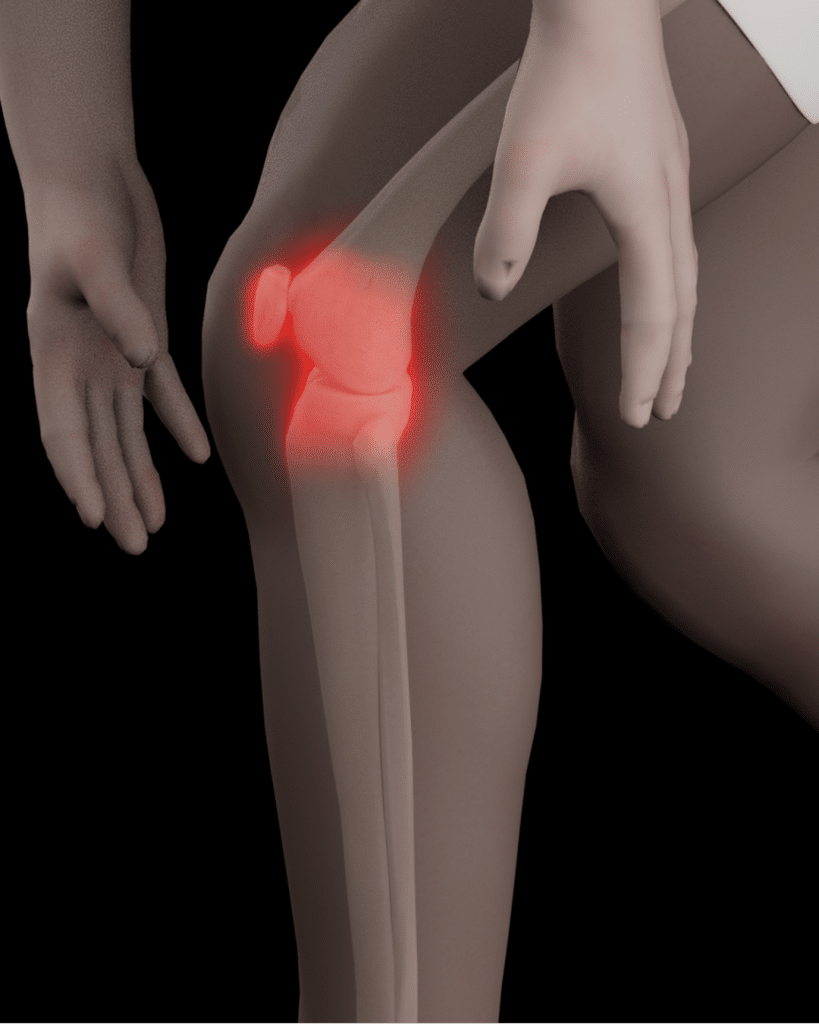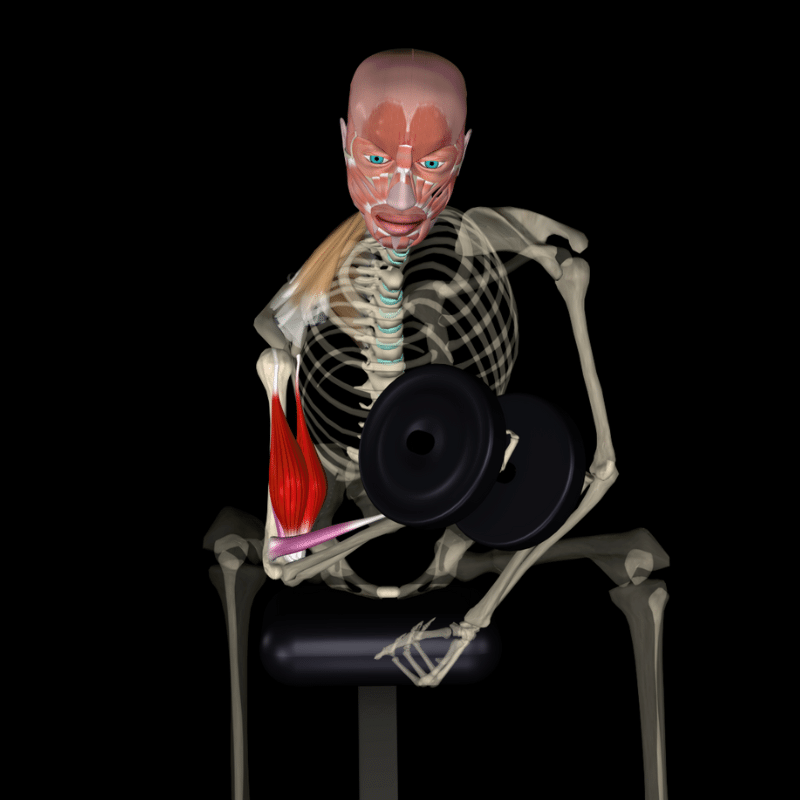To train to failure or not? In the quest for peak physical fitness and muscular development, one controversial topic often emerges in discussions among fitness enthusiasts and professionals alike: training to failure.
This method, defined as pushing your muscles to their maximum capacity until you’re unable to perform another repetition with correct form, has received both acclaim and criticism. This Muscle and Motion article explores the scientific evidence surrounding training to failure and examines if it’s the best way to achieve your goals.
Understanding Training to Failure
Training to muscular failure is commonly defined as the inability to complete another repetition with proper technique. The logic behind training to failure is tied to Henneman’s Size Principle. According to this principle, motor units within muscles are activated in a specific order: from the smaller Type 1 fibers, which are slower to fatigue, to the larger, more quickly fatigued Type 2 fibers.
The activation of these larger Type 2 fibers, which have a higher potential for growth, depends on the intensity of the exercise demand. As fatigue sets in during a workout, the body increasingly recruits these Type 2 fibers. This extensive recruitment can cause mechanical stress that triggers an anabolic (muscle-building) response, potentially leading to increased hypertrophy.[1]
The science behind training to failure
A systematic review and meta-analysis by Grgic et al. (2021) investigated the effects of resistance training to muscular failure compared to non-failure on muscle strength and hypertrophy. The study synthesized data from various trials involving participants engaged in strength training programs. The primary aim was to explore the effects of training to failure vs. non-failure on strength and hypertrophy.[1]
The results revealed that training to failure is not a prerequisite for increasing muscle strength or hypertrophy. When the volume was not equalized between groups, non-failure training even showed a slight advantage for strength gains. However, training to failure might offer some benefits for enhancing muscle size, particularly among individuals who are already resistance-trained. These findings highlight the complexity of designing optimal training protocols and suggest that individual preferences and responses play a significant role in determining the effectiveness of training to failure.[1]
Do we actually train to failure?
In the study by Emanuel et al. (2020), 22 resistance-trained individuals performed squat and bench press exercises to failure, deciding themselves when to end a set, encouraged by researchers to maximize effort. Sets were done at 70% and 83% of their 1RM. After, participants explained their reasons for stopping, categorized into general fatigue, specific muscle fatigue, pain, negative affect, and cardiovascular difficulty. Interestingly, many didn’t reach true muscle failure, indicating an early break based on perceived limitations. Other reasons, such as pain or cardiovascular issues, were noted, with cardiovascular difficulty being more common in squats at 70% 1RM. This research sheds light on why individuals end their sets earlier than their actual capability, emphasizing the mental and physical factors influencing resistance training.[2]
The pros and cons of training to failure
Should you incorporate training to failure into your regimen? We’ll help you make an informed decision by outlining this training technique’s key advantages and disadvantages.
Advantages of training to failure
- Muscle hypertrophy: One of the key benefits of training to failure is its impact on muscle size. The research suggests that pushing muscles to their limit can contribute to muscle hypertrophy for those more experienced in resistance training.[1]
- Efficiency for experienced lifters: For those who have been in the resistance training game for a while, training to failure can offer a way to break through plateaus and continue making gains. It forces the muscles to adapt by recruiting more muscle fibers.
- Mental toughness: Training to failure isn’t just a physical challenge; it’s a mental one. Pushing yourself to the limit can significantly enhance your mental resilience, teaching you to persevere through discomfort and fatigue. This mental toughness can translate into other areas of life, helping you face challenges with a stronger mindset.
Disadvantages of training to failure
- Limited impact on strength: While training to failure might benefit muscle size, the meta-analysis by Grgic et al. (2021) indicates that it doesn’t hold a significant advantage for increasing strength.[1] Other training methods might prove more effective and efficient for athletes or individuals focused primarily on enhancing their strength.
- Increased risk of injury: The most critical drawback of training to failure is the heightened risk and injury. Pushing muscles to their absolute limit can lead to excessive fatigue, which hampers recovery and increases the likelihood of injury. This risk underscores the importance of carefully balancing workout intensity with adequate rest and recovery periods.
- Extended recovery time: Training to failure can exhaust your muscles, necessitating longer recovery periods. This can slow your overall training progress, as your body might need more time to heal before it’s ready for the next intense session. Over time, this could lead to overtraining syndrome, characterized by fatigue and decreased performance.

Special considerations
Certain individuals, particularly those recovering from injuries or surgeries and those with hypertension, will likely want to avoid training to failure.[3] This technique significantly increases physiological stress and muscle damage, necessitating a careful approach for those aiming for intense workouts without excessively straining their bodies. In all these cases, seeking medical advice before choosing a training program is recommended.
Implementing training to failure wisely: Four essential tips
Training to failure can be an effective tool in your fitness arsenal when used correctly. It’s crucial, however, to approach this method with caution to maximize its benefits while minimizing risks. Here are four tips to help you implement training to failure wisely in your workouts:
- Not in every exercise: Adopt training to failure with moderation, particularly if you’re new to this approach. Due to its high intensity, limiting its use is advisable to avoid the pitfalls of overtraining and potential injury. Aim to include it in one or two sets of your workout, preferably in the last set of an exercise, to maintain form and safety throughout your session.
- Start with isolation exercises: Begin incorporating the training-to-failure technique with isolation exercises, such as bicep curls or leg extensions, rather than compound movements like squats or deadlifts. Isolation exercises focus on individual muscle groups and generally carry a lower risk of injury when performed to failure because they do not require the intricate coordination and stabilization needed for compound exercises. As you advance and include more complex compound exercises in your routine, ensure you have a reliable spotter or use safety arms to protect yourself if you fail a lift.
- Prioritize recovery: Adequate recovery is crucial when integrating training to failure into your routine. This intense method places significant stress on muscles, demanding substantial recovery time for repair and growth. Make sure to allow sufficient rest between workouts targeting the same muscle groups and incorporate active recovery methods to support the recovery process.
- Listen to your body: The most critical piece of advice for training to failure is to listen to your body. Recognize the difference between pushing your limits and pushing beyond what is safe. If you experience excessive fatigue, decreased performance, or signs of overtraining, it’s time to reassess your approach. Remember, training to failure should enhance your workout, not lead to burnout or injury.
By following these tips, you can make training to failure a beneficial part of your fitness routine, helping you achieve your muscle growth and strength goals while keeping your health and safety front and center.
In summary, training to failure is a technique that, when applied judiciously, can contribute significantly to muscle hypertrophy and mental resilience. It is not, however, a one-size-fits-all solution and does not universally enhance strength or suit every individual’s fitness journey.
The scientific evidence presents a compelling case for its selective use, particularly among those with prior resistance training experience. By adopting a balanced approach that includes moderation, focusing on isolation exercises, prioritizing recovery, and listening to your body’s signals, you can effectively integrate training to failure into your routine.
It’s essential to remember that achieving peak physical fitness involves a combination of strategies tailored to your personal goals, capabilities, and health considerations.
Ever wondered what makes our anatomical animations so accurate and engaging? Click here to learn about our Quality Commitment and the experts behind our content.
At Muscle and Motion, we believe that knowledge is power, and understanding the ‘why’ behind any exercise is essential for your long-term success.
Let the Strength Training App help you achieve your goals! Sign up for free.
Reference:
- Grgic, J., Schoenfeld, B. J., Orazem, J., & Sabol, F. (2022). Effects of resistance training performed to repetition failure or non-failure on muscular strength and hypertrophy: A systematic review and meta-analysis. Journal of Sport and Health Science, 11(2), 202–211.
- Emanuel, A., Rozen Smukas, I. I., & Halperin, I. (2020). An analysis of the perceived causes leading to task-failure in resistance-exercises. PeerJ, 8(e9611), e9611.
- Nóbrega, S. R., & Libardi, C. A. (2016). Is resistance training to muscular failure necessary? Frontiers in Physiology, 7.


